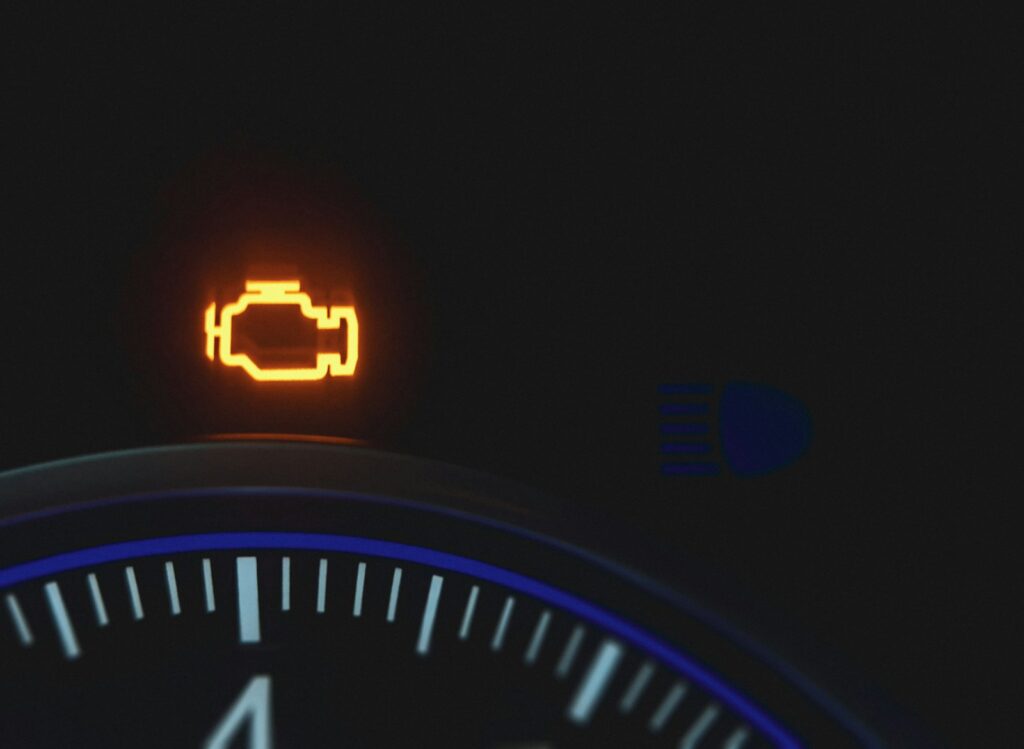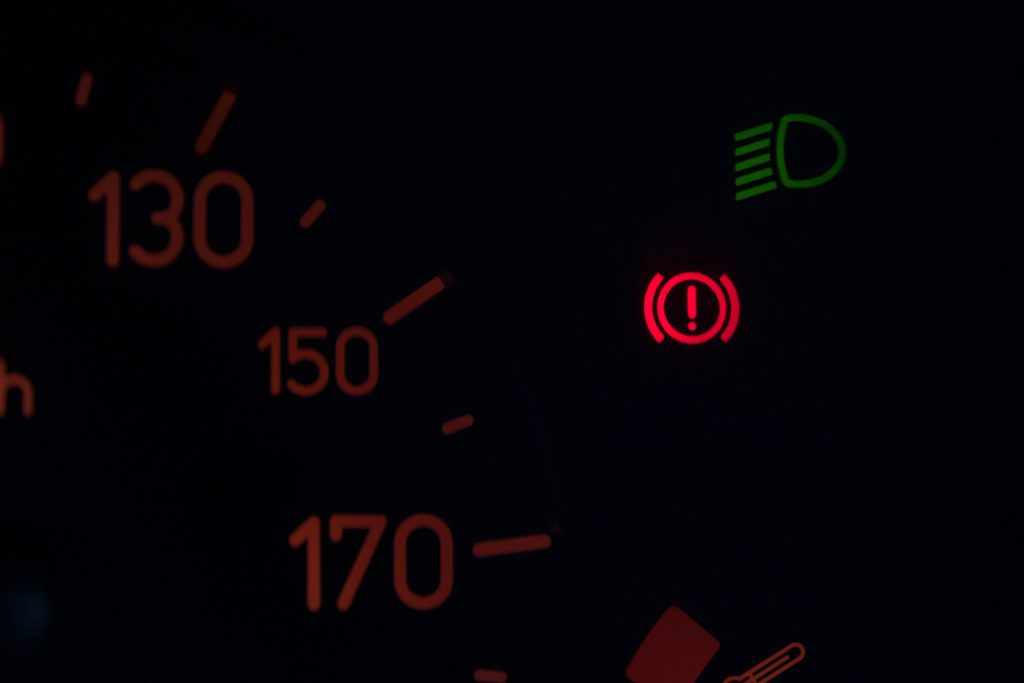Scheduled Maintenance 101: Dashboard Warning Lights
We’ve all had it happen (some of us more than once).
You start your vehicle’s engine, only to be greeted by warning lights blinking at you from the dashboard. Panic sets in as you begin to imagine all sorts of scenarios – all of which cost a lot of money to fix.
We get it. Fewer things cause more anxiety than seeing your vehicle’s dashboard warning lights come on. Scheduled maintenance can resolve those fears by preventing those dreaded warning lights from coming on in the first place.
Why are dashboard warning lights important?
Despite what you may think, dashboard warning lights aren’t your enemy. Some helpful engineers at the Hudson Motor Company designed them to help your vehicle communicate with you. Typically color-coded – red for urgent, yellow or amber for cautionary, and green or blue for informational – understanding the message they’re trying to send is an important part of being a responsible vehicle owner.

The check engine light is one of the oldest of these alerts. When you see it, it’s either time for an oil change or an indication of something more serious. Ignoring it is never advisable. Other lights might let you know your tire pressure is low or you need to add some motor oil.
Each warning is an opportunity to address issues during a scheduled maintenance visit before they escalate into serious and costly repairs. Paying attention to them and responding promptly keeps your vehicle safe to drive.
What are the common dashboard lights and what do they mean?
If it seems like there’s a light for every component in your vehicle, you’re not imagining it. As cars and trucks become more advanced, warning lights evolve with them. This isn’t necessarily a bad thing because it helps you quickly identify and address problems that could compromise your safety or lead to expensive repair bills down the road.
Let’s look at some of the most common dashboard warning lights to help you learn what to do when one of them suddenly comes on.
Check Engine Light
The check engine light is one of the most recognizable dashboard warning lights. It typically appears as an engine-shaped icon and can illuminate for various reasons, ranging from minor issues like a loose gas cap to more serious problems like a malfunctioning catalytic converter or oxygen sensor.
Ignoring this light can lead to decreased fuel efficiency and increased emissions, so it’s crucial to have it checked by a professional as soon as possible.
Oil Pressure Light
The oil pressure light, often depicted as an oil can with a drip, indicates low oil pressure within the engine. This warning can mean several things, such as low oil levels, a failing oil pump, or a clogged oil filter.
Driving with low oil pressure can cause significant engine damage, making it essential to address this issue immediately. Regular oil changes and scheduled maintenance can help prevent this light from coming on.
Battery Light
The battery light, represented by a battery icon, signals an issue with the vehicle’s charging system. This could be due to a failing alternator, a loose or corroded battery cable, or an aging battery.
If this light comes on while driving, your car may eventually lose power, leading to a breakdown. Regular battery checks and maintenance can help prevent charging system issues.
Brake System Light
The brake system light, typically shown as an exclamation mark inside a circle or the word “BRAKE,” indicates a problem with the braking system. This could be due to low brake fluid levels, worn brake pads, or a malfunctioning anti-lock braking system (ABS).
Ignoring this light can compromise your vehicle’s braking performance, posing a significant safety risk. Regular brake inspections during scheduled maintenance are essential to keep your braking system in top condition.
Tire Pressure Monitoring System (TPMS) Light
The TPMS light, often displayed as an exclamation mark inside a horseshoe, alerts you to low tire pressure. Sometimes it might also warn about a bad sensor in one of your tires.
Driving with improperly inflated tires can lead to poor handling, reduced fuel efficiency, and increased tire wear. Checking and maintaining the correct tire pressure is a simple yet crucial part of vehicle upkeep that can prevent this light from coming on.
Temperature Warning Light
The temperature warning light, usually represented by a thermometer icon, indicates that your engine is overheating. This can be caused by low coolant levels, a malfunctioning thermostat, or a failing water pump.

Overheating can cause severe engine damage, or leave you stranded alongside the road in hot Albuquerque weather. It’s important to address this issue immediately. Regular coolant checks and maintenance can help prevent overheating.
When should you call a mechanic about dashboard warning lights?
Some dashboard warning lights can be addressed at home with simple fixes. For example, if your low tire pressure indicator comes on, filling the tire with the correct amount of air usually resolves it. However, if the light comes back on again, you might have a leak in your tire, requiring help from a professional.
Some other scenarios when it’s best to call your trusted mechanic include:
- Persistent check engine light. If the light stays on after you’ve checked common issues like a loose gas cap, call a professional to diagnose the problem ASAP. The cause could be complex, such as a malfunctioning sensor or a more serious engine problem that requires specialized tools and expertise to address. Replacing an engine isn’t cheap. Don’t let it get to that point.
- Multiple warning lights. No one likes to see a dashboard warning light come on. But when more than one of them illuminates at the same time, get your vehicle to your mechanic immediately. A failing alternator is one issue that can cause multiple warning lights to flash. Don’t wait to find out the hard way what’s wrong.
- Brake system warning lights. Any suspected issues with your brakes should be checked immediately. Low brake fluid, worn brake pads, or ABS malfunctions can compromise your vehicle’s safety. Brakes are one component your mechanic can regularly inspect during scheduled maintenance visits.
Scheduled maintenance keeps dashboard warning lights at bay
Dashboard warning lights don’t have to feel like your enemy. Think of them as helpful, knowledgeable friends who want to prevent minor problems from turning into major, costly repairs down the road.
Regularly scheduled maintenance plays a vital role in preventing dashboard warning lights from appearing in the first place. By keeping up with routine checks, fluid changes, and part replacements, you can extend your vehicle’s lifespan and enhance its performance.
Understanding and responding to dashboard warning lights, along with maintaining a regular maintenance schedule, ensures your vehicle’s safety, reliability, and longevity. This proactive approach will save you time, money, and stress, allowing you to drive with confidence.